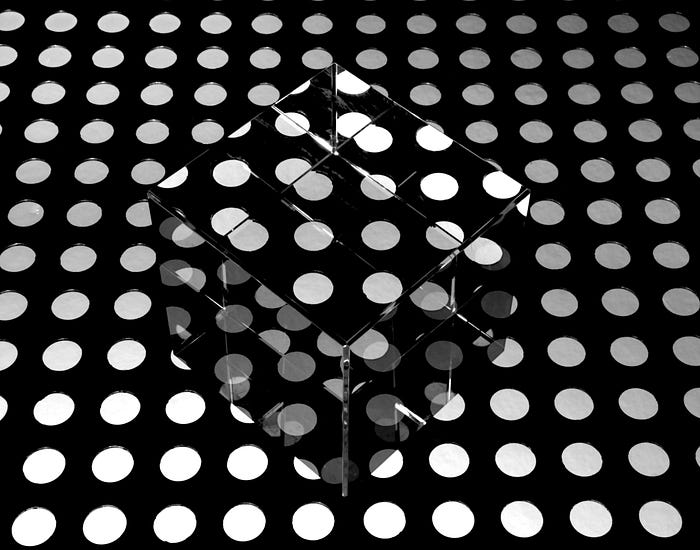

5 Unseen Factors that Change the User Experience (For Good & Bad!)
source link: https://uxplanet.org/5-unseen-factors-that-change-the-user-experience-for-good-bad-ff6d9cd52bb7
Go to the source link to view the article. You can view the picture content, updated content and better typesetting reading experience. If the link is broken, please click the button below to view the snapshot at that time.
5 Unseen Factors that Change the User Experience (For Good & Bad!)

We don’t always see what we’re designing for, a lot of bumps and hiccups on the road to inclusive & effective UX float around entirely invisible to the designer, but not to the inquiring and caring designer!
In this article we’ll explore 5 factors that go unseen, and if we can bring them to light then we take our UX to another level.
Language

The obvious interaction between User Experience & Language is that our users are going to have a hard time understanding what’s going on if they can’t speak or read the language shown to them!
Though, in the best of design, this actually isn’t a problem at all. You might have used an app or product so familiar and well designed that even though you had it in the wrong language (maybe you went through the setup incorrectly and now need to retrace your steps to the language settings), that it barely required much more effort to navigate than it would have in your natural tongue. Imagine how easy it would have been if you understood the language as well.
This is an important principle, as our experiences should transcend the user’s language and be so simple that they make sense no matter what.
Personality

How we’ve grown and the way the world has shaped us plays a huge part in not only the way we interact with the world around us, but the products that we use.
This unseen factor is the sole reason that personas and avatars exist — to capture the essence of a personality and core demographic that will most use a product. Understanding the various types of personalities, whether we want to look at it from a perspective as simple as introverted and extroverted, or want to delve into meyers-briggs a little bit, whatever we choose will assist us with the sleight of hand to manoeuvre the best products that our target personalities ACTUALLY want, not what we think they want.
Culture

Similarly to how personality affects the way we interact, culture shapes our interactions on a larger scale and forms our basis for understanding of our surroundings more so than our interactions.
In one culture one hand signal might mean ‘okay’, and another… Well it might be less polite! Understanding the culture of your users not only allows you create more familiar experiences for them that fit into their world view, but also allows us to forge a bond of commonality with users that wouldn’t be possible without a mutual cultural understanding.
Religious Beliefs

Whilst religion does not seem like it would affect our users’ experiences, we must remember what stands at the forefront of all religion: Ethics.
When we’re creating products, ethics should be at the forefront of our minds as well, creating with the user’s highest purpose in mind; not a twisted desire to manipulate and move them from A to B for our own benefit.
Whilst it is endlessly enticing to employ dark UX tricks to increase conversions and profits, we must remember that it will slap us back in our own faces eventually — when users realise what is being done, our brand images suffer, and we lose valuable users who would only would have gained more and more loyalty towards our brand and product, had we not deceived them!
Values

Our values, whilst partially defined from the external world, are one of the things we are able to completely shape ourselves and either choose to embody or ignore them day to day, living to our highest purpose or serving anothers.
This means that one user might have grown in a similar society as another, with similar cultural background, religious teachings, personality traits and more, but their values could be entirely different! It’s one of the things that make each and every person unique, and it also means that each and every user will interact with our products in a different way.
It’s impossible to perform a shotgun technique and give everybody what they want, that would be a big mistake; but that does not mean we can’t appeal to our target audiences values.
When we design for values, it signals to our user that they, not a generic 99/100 group, are who we are creating for. Building a product aligned with our users value is one of the strongest methods of empathic design.
In Summary
Inclusivity is incredibly important for UX Design, and stands as one of its core tenets. To design for the 99% means to lose 80 million users!
Now that you’ve brought these unseen effects to your mind’s eye, continue to utilise them in your experiences so that we can give our users what they deserve.
If you enjoy my content, you can Subscribe to Email Updates.
By becoming a Medium Member, you get unlimited article access & Support Creators Like Myself!
Check out my UX email newsletter, with Digestible Knowledge Every Wednesday.
I love connecting with new people, find me on Linkedin and Twitter!
You can find all my links and resources here at my UX Masterlist.
If you enjoyed my content, Drop a Follow, it keeps me writing! Much Love!
Recommend
About Joyk
Aggregate valuable and interesting links.
Joyk means Joy of geeK